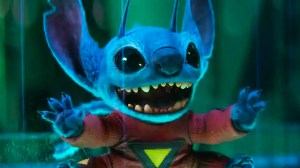Marvel Comics has released the second title in Jonathan Hickman’s epic reboot of the X-Men franchise, Powers of X #1. The very first panel of the comic reveals why Hickman emphasizes that it’s pronounced “Powers of Ten,” as we are introduced to four new eras of X-Men storylines, exploring the dawn of the X-Men dream, and where that dream stands 10, 100, and 1,000 years later.
Videos by ComicBook.com
Hickman’s dystopian vision for the “X²” era that unfolds 100 years after the X-Men began is going to be especially exciting for longtime X-Men fans. It basically reworks fan-favorites like the “Days of Future Past” Earth-811 timeline or Bishop’s “Earth-1191” timeline into a signature Hickman sci-fi upgrade of traditional X-Men lore.
The X² era is defined as being a war-torn era of conflict between two factions: mutants, and the army of “The Man-Machine Supremacy.” Unlike previous versions of this future, where Sentinel machines ran amok threatening mutants and humans alike, the humans and machines combined forces to form the Man-Machine Supremacy and effectively killed off the mutant population of earth until there were just 10,000 left. Those surviving mutants have since been driven off-world into three colonies:
- “Benevolence” – A converted space station on the fringe of Shi’ar space housing 8,000 mutant colonists.
- “Chandilar” – A colony of 2,000 mutants on the Shi’ar throne world, training as warriors for the Shi’ar Empire’s Imperial Guard
- “Asteriod K” The remnants of Krakoa that now exists as an asteroid, and the only known population of mutants still in Earth’s solar system. At the start of Powers of X #1 there are ten citizens of Asteroid K; by the end of the book, there are only eight left.
The Man-Machine Supremacy is led by none other than “Nimrod the Lesser,” a version of Nimrod that is somehow much more “human” in personality, but no less mechanical in his brutal destruction of mutants. The Man-Machine Supremacy also built breeding camps or “Khennils,” in which they engineered mutants in captivity to be “Hounds”; however, unlike the hounds of previous X-Men dystopian futures, these MMS Hounds were not hunters, but rather master spies and insurgents, with unreadable brains.
The other side of this new world are the mutant “Chimera” lines bred by Mr. Sinister. The history is purposefully murky, but at some point when mutant population dwindled Sinister was allegedly (key word) appointed by the “Mutant Leadership” to begin a mutant breeding project on Mars. There were four generations of the Sinister Line, and the one that takes prominence in the Man-Machine Supremacy war are the generation 3 “Chimeras,” bred with amalgamated power sets, comprised of up to five different x-genes.
Powers of X #1 has a big sequence set in this MMS war future, where we meet a new team of X-Men, and get to see one in particular take the spotlight: “Rasputin,” a female mutant and former hound, who is a combination of Colossus, Magik and Kitty Pryde, with additional powers like telepathy. Rasputin and her teammates infiltrated the MMS “Nexus” mainframe and retrieved some all-important intel that is never revealed; only Rasputin and “Cardinal” (a red Nightcrawler type from Sinister’s divergent Class 3 breeding outliers) make it home to Asteriod K, where we meet this future’s surviving X-Men: Wolverine, Black Tom Cassidy, Magneto, and Zorn!
This is only the beginning of course, but already Hickman has created enough of a world around this Man-Machine Supremacy for it to be its own wing of the X-Men Universe.
Powers of X is now available. You can hear our full review in the podcast above.









